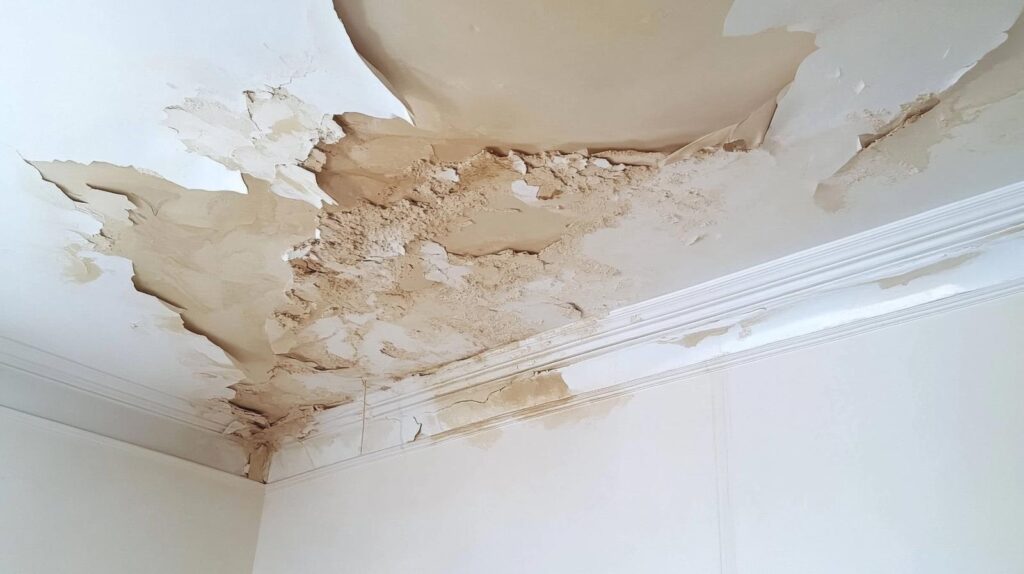
Contents
When faced with water damage, did you know that a staggering 98% of basements in the United States will suffer from some form of water damage during their lifetimes? Understanding the urgency and importance of swift water damage restoration, the key lies in quick and reliable solutions that can save you time, money, and stress. Discover how expert teams armed with cutting-edge tools and techniques can swiftly extract water, prevent mold growth, and ensure a thorough restoration process. Stay tuned to learn more about efficient drying methods, expert mold remediation techniques, and all-encompassing structural repairs that guarantee a seamless restoration experience.
Key Takeaways
- Rapid water extraction minimizes property damage and prevents mold growth.
- Efficient drying techniques accelerate the restoration process.
- Expert mold remediation prevents mold recurrence for a healthy environment.
- Comprehensive structural repairs ensure swift restoration and prevent further damage.
- Timely insurance claim assistance aids in efficient resolution for water damage coverage.
Rapid Water Extraction Services
When facing water damage, swift action is essential to minimize further harm to your property. In the event of water damage, an emergency response team equipped with advanced water removal techniques is pivotal to prevent extensive damage to your home. Water removal is a crucial first step in the restoration process.
Emergency response teams are trained to quickly assess the extent of the water damage and implement an efficient water removal plan. They use specialized equipment such as pumps, vacuums, and extractors to promptly remove standing water from your property. This rapid water extraction helps prevent additional structural damage, mold growth, and other potential issues that could arise from prolonged exposure to water.
Timely water removal is necessary as excess water can seep into walls, floors, and furniture, causing irreversible damage if not addressed promptly.
Efficient Drying and Dehumidification
When it comes to efficient drying and dehumidification after water damage, rapid moisture removal is crucial to preventing further issues like mold growth. Utilizing reliable drying equipment can greatly accelerate the restoration process and minimize damage to your property.
Rapid Moisture Removal
To effectively combat water damage, the rapid elimination of moisture through efficient drying and dehumidification is vital. In situations requiring emergency response, such as flooding or leaks, swift action is essential to prevent further damage. Water mitigation specialists utilize advanced techniques to extract water and moisture from affected areas promptly. By employing powerful dehumidifiers and industrial-grade drying equipment, excess moisture is efficiently removed, reducing the risk of mold growth and structural deterioration.
During the water mitigation process, professionals strategically place dehumidifiers and air movers to expedite the drying process. These devices work in tandem to eliminate moisture from the air and surfaces, ensuring a thorough and rapid drying experience.
It’s crucial to address moisture promptly to prevent secondary issues that may arise from prolonged exposure to water.
Reliable Drying Equipment
Effective water damage restoration relies heavily on the utilization of reliable drying equipment for efficient drying and dehumidification. To achieve the best results and prevent further damage, consider the following key points:
Drying Technology Advancements: Stay updated with the latest advancements in drying technology to benefit from faster and more efficient drying processes. Look for equipment that offers features like low grain refrigerant dehumidifiers or desiccant dehumidifiers for top-notch performance.
Eco-friendly Drying Methods: Opt for drying equipment that incorporates eco-conscious practices to minimize environmental impact. Choose systems that use sustainable refrigerants or energy-efficient models to reduce energy consumption while still delivering powerful drying capabilities.
Proper Airflow Management: Ensure that the drying equipment you use promotes proper airflow throughout the affected area to accelerate the drying process. Proper airflow helps prevent mold growth and guarantees thorough drying of all surfaces.
Regular Maintenance: Keep your drying equipment well-maintained to guarantee its reliability and efficiency. Regular maintenance checks and servicing will help prevent malfunctions and ensure consistent performance when dealing with water damage restoration tasks.
Expert Mold Remediation Techniques
Utilizing advanced mold remediation methods is vital in effectively addressing mold issues and guaranteeing a safe and healthy environment in your property. When faced with mold problems, it’s important to employ expert mold removal strategies to eradicate the mold and prevent its recurrence. Here are some key methods used by professionals in mold remediation:
| Method | Description | Advantages |
|---|---|---|
| Moisture Management | Identifying and fixing sources of moisture to prevent mold growth. | Prevents mold from thriving in damp environments. |
| HEPA Vacuuming | Using High-Efficiency Particulate Air vacuums to remove mold spores and particles. | Guarantees thorough removal of mold and enhances indoor air quality. |
| Encapsulation | Sealing off mold-affected areas with specialized coatings to prevent mold spread. | Contains mold growth and prevents it from spreading to other parts of the property. |
Comprehensive Structural Repairs
When it comes to addressing water damage, the first step is a thorough structural assessment to determine the extent of the issues.
Following this evaluation, timely repair strategies are essential to prevent further damage and guarantee a swift restoration process.
Quality workmanship standards must be upheld to secure the structural integrity of the building is fully restored.
Structural Assessment Process
A critical aspect of the water damage restoration process is the structural assessment, which involves a thorough examination of the building’s foundation, walls, and support structures to identify any potential issues resulting from water intrusion. During this evaluation, the following steps are typically taken:
Visual Inspection: Professionals assess visible signs of damage such as cracks, warping, or discoloration on walls, ceilings, and floors.
Moisture Detection: Specialized tools like moisture meters are used to detect hidden water pockets within walls or under flooring that could compromise structural integrity.
Testing Support Structures: Load-bearing elements like beams and columns are inspected to verify they haven’t been weakened by water exposure.
Documentation of Findings: Detailed reports are generated outlining the extent of the damage evaluation and recommendations for structural repairs to restore the building’s stability.
Timely Repair Strategies
Inspecting the structural stability of a building after water damage is a crucial step in ensuring a safe and steady environment for occupants. When it comes to timely repair strategies for extensive structural repairs, efficient restoration techniques and quick response efforts are essential. The key to successful restoration is addressing the damage promptly and effectively.
To begin, identify and prioritize the areas that require immediate attention to prevent further deterioration. Quick response efforts can help mitigate secondary damages and reduce the overall restoration time. Utilizing advanced restoration techniques, such as rapid drying methods and moisture detection tools, can aid in the restoration process.
Effective restoration techniques involve not just repairing the visible damage but also addressing any underlying issues to prevent future problems.
This includes thorough drying, dehumidification, and ensuring proper ventilation to prevent mold growth.
Quality Workmanship Standards
Maintaining high-quality craftsmanship standards is vital when undertaking thorough structural repairs in water damage restoration. Skilled technicians and advanced technology play essential roles in ensuring the integrity and safety of your property. Here are key aspects to keep in mind:
Certified Technicians: Entrusting your structural repairs to certified and experienced technicians ensures expertise in handling complex restoration work.
Precision and Accuracy: Utilizing advanced technology allows for precise assessment and execution of structural repairs, ensuring thorough restoration of your property.
Attention to Detail: Quality craftsmanship standards demand meticulous attention to detail, from initial assessment to the final touches of the repair process.
Holistic Approach: Skilled technicians adopt a holistic approach to structural repairs, addressing not just the visible damage but also underlying issues to prevent future water damage.
Professional Content Restoration
When faced with the aftermath of water damage, professional content restoration services become necessary to salvaging your belongings. The content cleaning process is a detailed procedure that aims to restore your items to their pre-damaged state. Professional restoration technicians utilize specialized techniques to clean and sanitize your belongings, ensuring that they’re free from contaminants and mold growth.
This process involves carefully evaluating each item, determining the most suitable cleaning method, and executing the restoration with precision.
Odor removal techniques are also vital in content restoration. Water damage often leaves behind musty odors that can be challenging to eliminate. Professional restoration services employ advanced deodorization methods to effectively neutralize odors and restore a fresh scent to your belongings.
These techniques target the source of the odors, rather than just masking them temporarily.
Timely Insurance Claim Assistance
To expedite the process of filing your insurance claim after water damage, prompt and efficient assistance is crucial. Here are some key points to bear in mind for timely insurance claim assistance:
Review Your Insurance Coverage: Take a thorough look at your insurance policy to understand what’s covered regarding water damage. Familiarize yourself with the extent of coverage for damages like burst pipes, flooding, or leaks.
Document the Damage: Before starting the claim process, document the water damage thoroughly. Take photos and videos of the affected areas and items. Keep a detailed list of damaged belongings for your records and to provide to the insurance company.
Notify Your Insurance Company Quickly: As soon as you discover the water damage, contact your insurance provider to initiate the claim process. Prompt notification can help speed up the assessment and resolution of your claim.
Follow the Claim Process: Work closely with your insurance company to understand the steps involved in the claim process. Provide all necessary information and documentation promptly to ensure a smooth and efficient resolution of your claim. Stay in communication with your insurance adjuster to address any questions or concerns promptly.
Final Thoughts
To sum up, trust in the experts for swift and reliable water damage restoration solutions. From rapid water extraction to efficient drying and dehumidification, expert mold remediation, all-encompassing structural repairs, professional content restoration, and timely insurance claim assistance, the process is thorough and seamless. Let the specialized tools and advanced techniques work their magic, ensuring your property is restored to its pre-damage condition in no time. Trust in the professionals for a stress-free restoration experience.
Recent Posts
Why Choose Professional Water Extraction and Mold Cleanup?
When faced with water damage, you can’t afford to overlook the risks of mold growth.
What Are Emergency Water Extraction Services?
Water damage can strike unexpectedly, yet the right emergency water extraction services can make a
Affordable Mold Removal Services for Businesses
Did you know that mold can silently undermine your business’s health and safety standards? Ignoring
